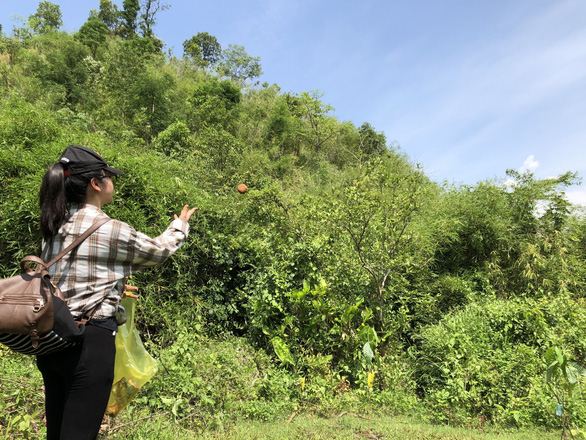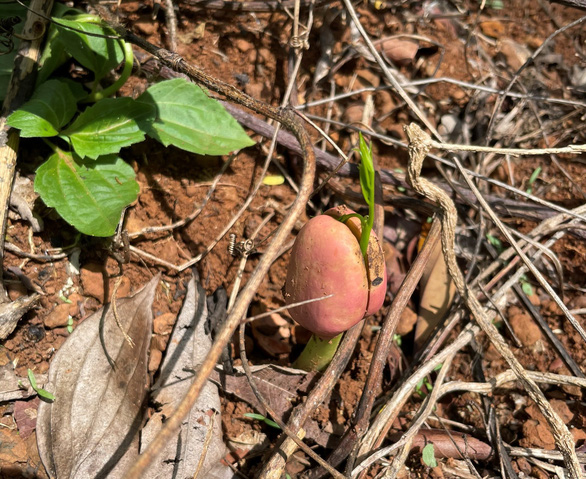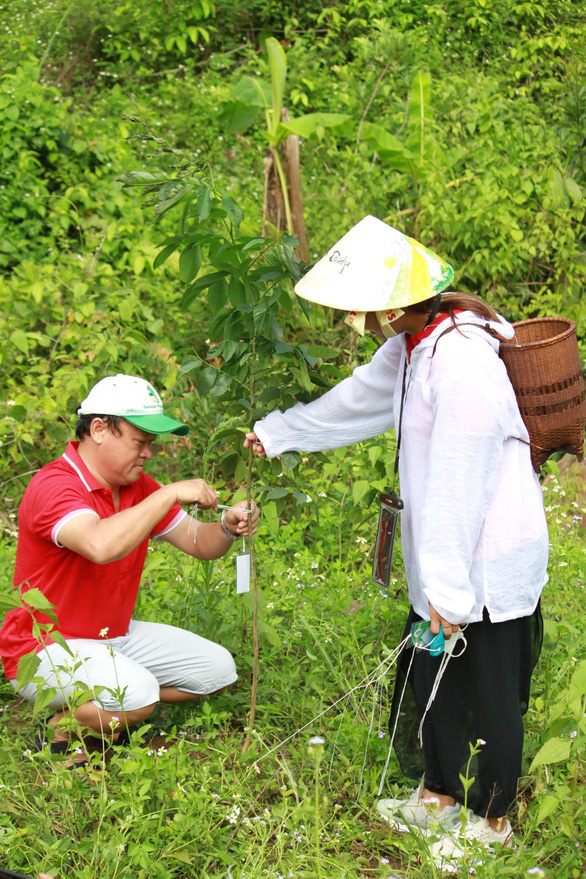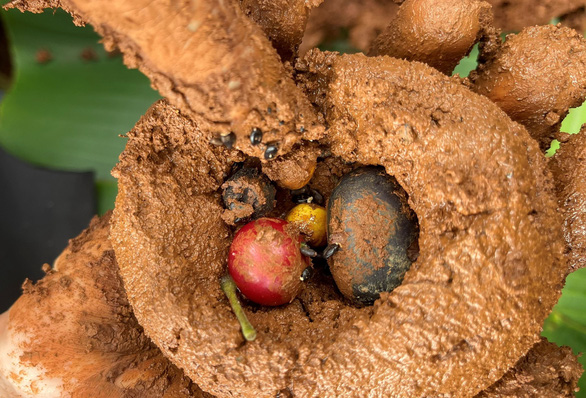'Bombs of seeds' thrown by young people in the Central Highlands provinces of Dak Lak and Lam Dong carry the hope for reviving the deforested hills.
The initiative, kick-started in May, has become a new Internet sensation and inspired other people to follow suit in Vietnam.
Wrapped hope
According to Pham Quang Thai, a member of the Central Highlands Association for the Protection of Natural Resources and the Environment, each bomb contains soil mixed with organic fertilizer and rice husks wrapping seeds of plants with good vitality as well as high drought tolerance.
Before being thrown away, they are moistened to ensure seeds will germinate well, helping to recreate destroyed forests.
The group’s core members paid due attention to research and selected plants that could adapt to local soil before implementing the project.
They then carried seed bombs to drop at hills that were severely damaged by deforestation.
|
|
| Young people and children learn how to make a seed bomb in the Central Highlands of Vietnam. Photo: Khoi Minh / Tuoi Tre |
Thai said forest regeneration using seed bombs was pioneered in India.
Based on local conditions, these seed carriers are spread by aircraft in some countries.
“In harsh areas, we dig holes to put seed bombs inside, creating favorable conditions for them to grow,” Thai explained.
Ha Vi, a 22-year-old from Dak Lak, said she found the activities interesting and meaningful.
“Wandering around hills to drop seed bombs is also a good way to exercise,” she said.
|
|
| A seed starts sprouting after being thrown into a forest in the Central Highlands of Vietnam. Photo: Khoi Minh / Tuoi Tre |
Seeds of good deeds
Inspired by the initiative, some local travel agents developed experimental tours combining tourism with forest planting.
Pham Thanh Tuan, founder of Bo Cong Anh Social Enterprise in Dak Lak, said the project did not only help to revive forests but also sow good seeds of environmental protection to students and young people.
“Therefore, we want to integrate the activity into our tour packages to attract more people to participate,” he said.
|
|
| A tourist hangs an identification card on a tree he plants in the Central Highlands of Vietnam. Photo: Khoi Minh / Tuoi Tre |
Besides seed bombs, tourists also brought bare seeds and seedlings to grow plants under the guidance of local forest rangers.
“On each plant, we hang the ID code of the person who plants it,” said Tuan.
As the Central Highlands region has many indigenous fruit trees, the group plans to call for the contribution of local farmers to create a seed bank. Collected seeds will then be sown in forests.
“It is great that those seeds we plant today will grow strongly and cover bare hills,” said eleventh grader Phan Duy Nghia.
Sharing the feeling, Pham Chi Ta, director of Vietnam Highland Travel Agency, said they also wanted to include seed bomb spreading in their tours.
|
|
| Several seeds are wrapped in a soil ball. Photo: Khoi Minh / Tuoi Tre |
The company will have to prepare legal procedures regarding areas they can plant forests, Ta said.
However, he pinned high hopes on the activity’s positive impacts on local communities.
“I usually have forest trips to develop tour packages and get chances to work with forest owners and management boards," he said.
"I look forward to bringing tourists to damaged forests to scatter seed bombs and lend a hand in re-growing them.”
|
|
| A young family participates in a weekend forest planting event in the Central Highlands of Vietnam. Photo: Tam An / Tuoi Tre |
Do Xuan Dung, deputy director of Dak Lak’s Department of Agriculture and Rural Development, said the initiative should be duplicated in different localities to save dying forests.
The integration of seed bomb spreading activity into tours also helps to spread this idea further.
“We have their back," he said.
"If young people and enterprises want to approach forest owners and management boards, we can help them connect."
Like us on Facebook or follow us on Twitter to get the latest news about Vietnam!























































